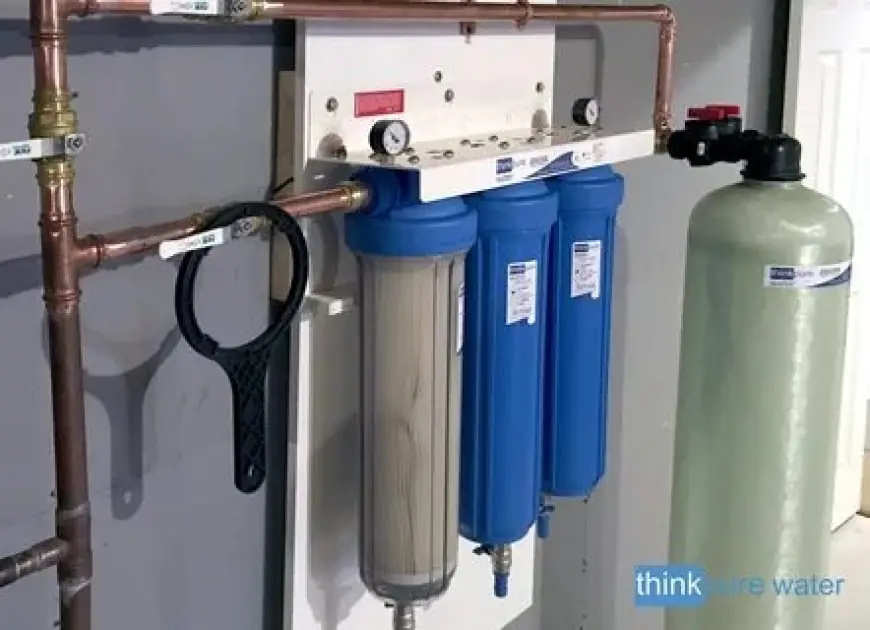What Every Homeowner Should Know About Contaminants in Drinking Water

When you turn on the faucet in your home, the water may look clear and taste fine—but that doesn’t always mean it’s safe. Across the country, millions of households face potential risks from contaminants lurking in their drinking water. From aging plumbing systems to agricultural runoff and industrial waste, the sources of contamination are more common and complex than many homeowners realize.
Understanding what might be in your water—and how to detect and address those issues—is essential for protecting your family's health. Whether you're living in a newly built home or a century-old house, being informed about water quality is more important than ever.
The Common Contaminants You Can’t See
Most of the harmful substances found in drinking water are invisible and tasteless, making them difficult to detect without professional tools. Some of the most common contaminants include:
-
Lead – Often present in older plumbing systems, lead can leach into your drinking water from pipes, solder joints, or fixtures.
-
Chlorine & Chloramine – While used in municipal water treatment, these chemicals can irritate skin, damage plumbing fixtures, and affect taste.
-
PFAS (Per- and Polyfluoroalkyl Substances) – Also known as "forever chemicals," PFAS are linked to cancer, immune system disorders, and other health concerns.
-
Nitrates – Typically originating from fertilizer runoff, nitrates are especially dangerous to infants and pregnant women.
-
Bacteria & Parasites – In some systems, particularly wells or homes with compromised infrastructure, water may be exposed to microbial contamination.
What makes these contaminants even more dangerous is that they can accumulate over time, leading to chronic health problems without immediate symptoms.
Why Older Homes Require Extra Caution
If you live in an older property, especially one built before the 1980s, your plumbing system may contain materials that are now known to be hazardous. For example, galvanized pipes and lead service lines were once common but can now pose a significant risk to water quality.
Because of this, old house drinkable water solutions have become an increasingly important topic among homeowners and real estate professionals. Solutions often include a combination of plumbing upgrades, water filtration systems, and point-of-use treatment devices. These customized systems are designed to address the unique issues commonly found in vintage or historic homes.
It's not just about replacing old pipes—it's about understanding how age, corrosion, and outdated materials can affect water safety and taking proactive steps to resolve them.
The Role of Water Testing in Ensuring Safety
Before making any decisions about treatment or filtration, it's crucial to determine exactly what contaminants are present. This is where home water testing services come in. These services provide a scientific analysis of your water, identifying harmful substances and measuring their concentration levels compared to federal or local safety standards.
Testing can include checks for:
-
Heavy metals like lead, copper, and arsenic
-
Microbiological contaminants
-
Volatile organic compounds (VOCs)
-
Hardness and mineral content
-
Chlorine levels and pH balance
A comprehensive water test not only reveals existing issues but also helps in designing the most effective treatment plan. Many professionals recommend testing at least once a year, and more frequently if your water source changes or if you notice changes in taste, odor, or clarity.
In homes with private wells, testing is even more critical, as municipal water safety regulations do not apply.
Health Risks Associated with Long-Term Exposure
Prolonged exposure to contaminated water can lead to a range of health issues, depending on the specific substances involved. For example:
-
Lead poisoning can impair cognitive development in children.
-
Chlorine byproducts are linked to bladder cancer and reproductive problems.
-
Bacterial contamination may result in gastrointestinal illness or worse for immunocompromised individuals.
-
Nitrate exposure has been associated with blue baby syndrome in infants.
For homeowners, understanding these risks underscores the importance of regular testing and prompt intervention. Safe drinking water isn’t just a convenience—it’s a public health necessity.
What You Can Do Today to Protect Your Family
If you're concerned about your home's water quality, start with these steps:
-
Schedule a Water Test: Use a certified lab or professional testing service to evaluate the full range of potential contaminants in your water.
-
Inspect Your Plumbing: If you live in an older home, have a licensed plumber check for outdated or corroded pipes.
-
Research Treatment Options: Based on your water test results, consider whole-home filtration, reverse osmosis systems, or under-sink purifiers.
-
Check with Local Authorities: Your local water utility may provide an annual water quality report that can serve as a starting point for understanding common contaminants in your area.
Remember that prevention is often more cost-effective than dealing with health issues or expensive plumbing repairs down the road.
Final Thoughts
Contaminants in drinking water are a serious concern—but they don’t have to be a mystery. With the right knowledge, tools, and expert support, you can take control of your home’s water safety and ensure that every glass you pour is one you can trust.
Whether you're navigating the challenges of maintaining a historic property or simply want to make sure your water is clean and healthy, taking action today can make all the difference for your family’s long-term well-being.
What's Your Reaction?
 Like
0
Like
0
 Dislike
0
Dislike
0
 Love
0
Love
0
 Funny
0
Funny
0
 Angry
0
Angry
0
 Sad
0
Sad
0
 Wow
0
Wow
0





















































